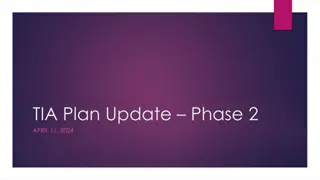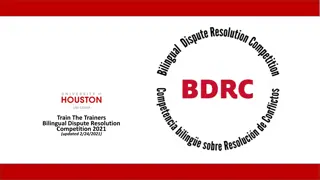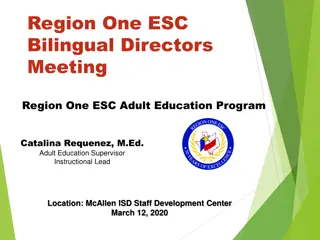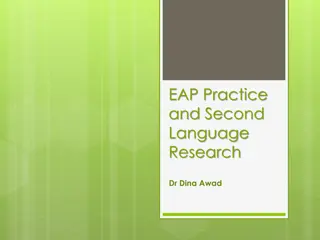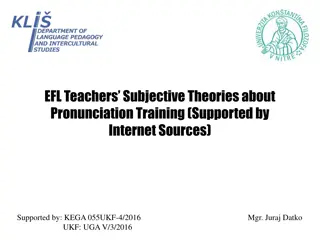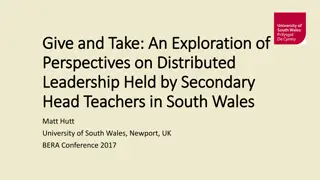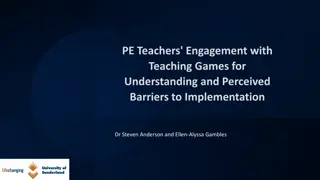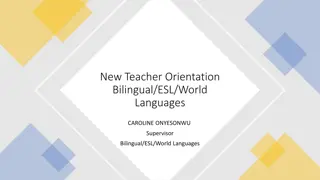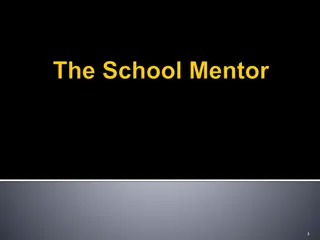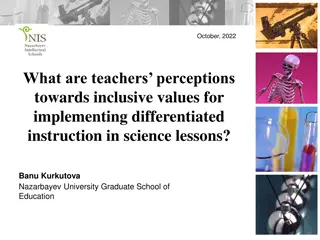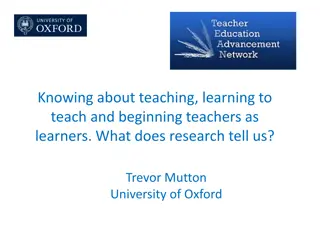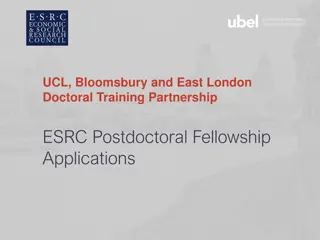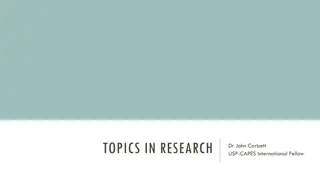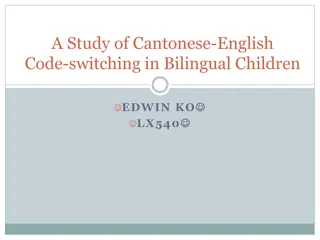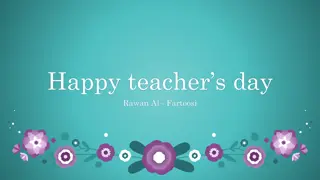Bilingual Teaching Perspectives Explored in Teachers' Meeting at ESRC Seminar
In a recent seminar at ESRC, Joke Dewilde explored various perspectives on bilingualism and bilingual teaching. The research focused on views expressed by participants at a teachers' meeting, discussing theoretical frameworks, site details, participants, and key extracts from the dialogue. Insights were shared on monoglossic and heteroglossic ideologies, distinct teaching arrangements, and the importance of concepts in mother tongue acquisition for bilingual students.
Download Presentation

Please find below an Image/Link to download the presentation.
The content on the website is provided AS IS for your information and personal use only. It may not be sold, licensed, or shared on other websites without obtaining consent from the author. Download presentation by click this link. If you encounter any issues during the download, it is possible that the publisher has removed the file from their server.
E N D
Presentation Transcript
Strict separation and flexible multiplicity Discussing a bilingual teacher s work at a teachers meeting ESRC seminar, Glasgow, Joke Dewilde
Overview Research question and focus Theoretical approach Site and participants Meeting and extracts Disussion and concluding remarks Joke Dewilde
Research question and focus Which views of bilingualism and bilingual teaching are expressed at the teachers meeting, and by whom? Joke Dewilde
Theoretical approach Monoglossic ideology Heteroglossic ideology Recursive framework Dynamic framework Subtractive framework Additive framework Flexible convergent arrangements Strictly separated arrangements Flexible multiple arrangements Flexible multiple arrangements Joke Dewilde
Site and participants Berg sen primary school (years 1 to 7) Small town in rural areas in East Norway Approx. 500 pupils of which 32 receive Norwegian as a Second Language/bilingual teaching 21 classes + 1 transition class for newly-arrived pupils Colour Box Joke Dewilde
Meeting Participants Lene head teacher Kine responsible for transition class, NSL teacher Maryam bilingual teacher Brit, Elin and Tora teaching newly-arrived pupils (Joke researcher) Colour Box Topics on the agenda Exemption of the subject of English (15 ) Parental involvement (12 ) Appropriate clothing during wintertime (16 ) Work of bilingual teachers (35 ) Joke Dewilde
Extract 1: Kine 727 728 729 730 731 732 733 734 735 Kine Cause e:m (2.0) because we know that- (.) that it s concepts that are important for the children. To acquire concepts. (1.0) And we know that (.) when you have concepts in your mother-tongue (.) then you ll automatically e: acquire it in the second language and- or not automatically but then you ll have a base to gradually understand. Joke Dewilde
Extract 2: Kine 744 745 746 747 748 749 750 751 752 753 754 Kine (.) e:m (1.5) but then I have- I think what has been a bit of a disagreement between Maryam and me maybe has been that Maryam often e:m teaches the kids- you- you go through things that the kids have in- in other subjects, M. and then you translate i:t to Arabic, and I think that s very right, but then you also spend time teaching them a number of concepts in Norwegian in connection with the same ((theme)), I think. Maryam Kine Joke Dewilde
Extract 3: Maryam 785 786 787 Maryam I want to ask Kine how can we (.) expand the system of concepts if we don t teach the theme in both languages? Joke Dewilde
Extract 4: Maryam 842 843 844 845 846 847 848 849 850 851 852 853 Maryam I don t feel like a mother-tongue teacher. I feel like a [bilingual- [bilingual subject teacher Mm. I got the qualifications. So I can- I can work as a bilingual teacher. Yeah. Therefore I work (.) like this e: in Norwegian and in Arabic and in English if it s necessary. Mm. To help my pupils to adapt things for my pupils. Mm. Lene Kine Maryam Kine Maryam Kine Maryam Kine Joke Dewilde
Extract 4 (cont.) 855 856 857 858 889 890 891 892 893 894 895 896 897 (Maryam) A:nd we use an exercise book. We do the- for example I worked with Rania today (.) hh wi:th- (1.0) with two pages in ((the book)) Zeppelin. And it was page one hundred and page one hundred and one (.) a:nd e: it was about winter and cross-country skiing. We did those two pages. We read together. I read and she read to me. She- she tries to read. (.) hh Then we did the difficult words e: in Norwegian and in Arabic. We write the difficult words in an ex- e:: exercise book. So we do every e: every word in two languages. That s how I e: extend her system of concepts. Joke Dewilde
Discussion: language views Kine (extracts 1 and 2) Monoglossic ideology Additive theoretical framework Strict language separation arrangement Maryam (extracts 3 and 4) Heteroglossic ideology Dynamic theoretical framework Flexible multiplicity arrangement Translanguaging as a bilingual pedagogy challenging monoglossic challenging subtractive/additive challenging strict separate Joke Dewilde
Discussion: topical sensitivity Traditional metaphor of host and guest Monoglossic ideology Kine: host for subject of Norwegian Maryam: guest in subject of Norwegian Metaphor of housing cooperative Heteroglossic ideology Kine and Maryam administer the Norwegian language on an equal footing Both teachers have their own specific competencies Joke Dewilde
Concluding remarks Co-existing language views Norwegian policy monoglossic (subtractive) NSL teacher s argumentation monoglossic (additive) Bilingual teacher s argumentation heteroglossic (dynamic) Topical sensitivity due to NSL teacher s positioning Joke Dewilde




